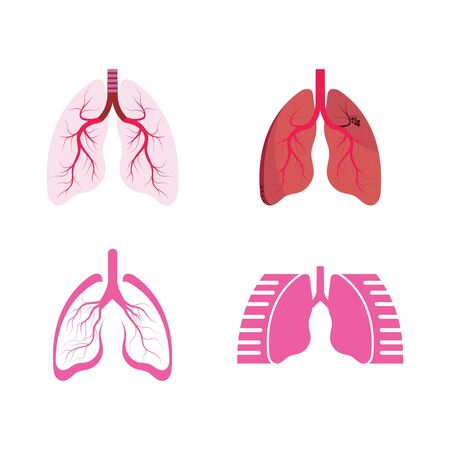Introduction to Multidisciplinary Pediatric Rehabilitation
Early pediatric rehabilitation is a specialized area of healthcare that focuses on helping infants and young children who have developmental delays, injuries, or congenital conditions reach their fullest potential. In the United States, early intervention is highly valued because research shows that the first few years of life are critical for brain development. When children receive support as early as possible, they have better chances for improved physical, cognitive, social, and emotional outcomes.
What Is Early Pediatric Rehabilitation?
Early pediatric rehabilitation involves a coordinated set of therapies and interventions designed to address a childs unique needs. This can include physical therapy, occupational therapy, speech-language therapy, and other supportive services. The goal is to help children develop essential skills like movement, communication, self-care, and social interaction.
Why Is Early Intervention Important?
The early years set the stage for lifelong learning and health. Intervening during this period can:
- Maximize brain plasticity
- Prevent secondary complications
- Promote independence in daily activities
- Support families in caring for their child
The Multidisciplinary Approach: A U.S. Perspective
In the American healthcare system, a multidisciplinary approach means that professionals from different backgrounds work together to create an individualized care plan. Each specialist brings their own expertise to the team, ensuring comprehensive care tailored to each childs needs.
| Discipline | Main Focus in Rehab | Typical Team Members in U.S. |
|---|---|---|
| Physical Therapy (PT) | Movement, balance, strength | Licensed Physical Therapists |
| Occupational Therapy (OT) | Daily living skills, hand use, sensory processing | Licensed Occupational Therapists |
| Speech-Language Pathology (SLP) | Communication, feeding, swallowing | Speech-Language Pathologists |
| Pediatrics/Developmental Medicine | Medical management and diagnosis | Pediatricians, Developmental Pediatricians |
| Psycho-social Support | Coping strategies, family support | Social Workers, Psychologists |
| Care Coordination | Navigating services and resources | Case Managers, Service Coordinators |
The Rationale Behind Multidisciplinary Teams
No single professional can meet all of a child’s complex needs. By bringing together specialists from various fields, multidisciplinary teams provide holistic care that addresses every aspect of a childs development. This approach improves communication among providers and ensures that families get well-rounded support—a key value in the American healthcare landscape.
A Family-Centered Model
An important part of multidisciplinary care in the U.S. is involving families as active team members. Parents and caregivers know their child best and play an essential role in decision-making and carrying out therapeutic activities at home. By working together as partners with healthcare professionals, families help create the most effective path forward for their child.
2. Key Disciplines and Collaborative Roles
Understanding the Core Pediatric Rehab Team
Early pediatric rehabilitation is most effective when a team of experts works together to support a child’s unique needs. In the United States, this multidisciplinary approach brings together professionals from different backgrounds, each with specialized training and roles. Here’s an overview of the key disciplines involved:
| Discipline | Main Responsibilities | How They Collaborate |
|---|---|---|
| Physical Therapist (PT) | Improves movement, strength, balance, and gross motor skills | Works with OTs on mobility and daily activities; consults with physicians about medical restrictions |
| Occupational Therapist (OT) | Supports fine motor skills, self-care, and sensory processing | Coordinates with PTs for joint therapy sessions; partners with SLPs on feeding and play tasks |
| Speech-Language Pathologist (SLP) | Assesses and treats speech, language, communication, and swallowing issues | Collaborates with OTs for feeding therapy; updates team on progress in communication goals |
| Pediatrician/Physician | Oversees medical care, diagnoses conditions, prescribes treatments | Makes referrals to rehab specialists; provides health updates to the entire team |
| Psychologist | Assesses cognitive, emotional, and behavioral needs; offers counseling | Guides the team on behavioral strategies; supports families through adjustment challenges |
| Social Worker | Connects families with resources; advocates for social and emotional well-being | Liaises between families and providers; helps navigate insurance and community services |
The Power of Teamwork in Early Intervention
No single discipline can meet all the needs of a child in early rehab. The magic happens when these professionals share information regularly—sometimes during joint sessions, sometimes in formal meetings. For example, a physical therapist might identify a mobility challenge that affects feeding skills, prompting a collaboration with an occupational therapist or speech-language pathologist.
Family-Centered Collaboration
A key part of American best practices is involving families as active partners. Parents help set goals and track progress alongside the rehab team. Social workers often play a vital role by ensuring families understand treatment plans and have access to community resources.
Cultural Sensitivity in Teamwork
Pediatric rehab teams are trained to respect cultural backgrounds and family traditions. This means they adapt their approaches to fit each family’s values and routines, making interventions more meaningful and effective for every child.

3. Best Practices and Evidence-Based Strategies
Family-Centered Care in Pediatric Rehabilitation
In the United States, family-centered care is a cornerstone of pediatric rehabilitation. This approach means that therapists, doctors, and other professionals work closely with families to create individualized treatment plans. Families are seen as essential partners because they know their child’s strengths, needs, and daily routines best. This teamwork helps children feel more comfortable and ensures that therapy goals fit into everyday life at home and in the community.
Key Principles of Family-Centered Care
| Principle | Description |
|---|---|
| Respect | Recognize family values, beliefs, and cultural backgrounds. |
| Communication | Share information openly and honestly with families. |
| Collaboration | Include families as active participants in goal setting and decision-making. |
| Empowerment | Support families to build confidence in caring for their child’s needs. |
Multidisciplinary Team Approaches: Who Is Involved?
Pediatric rehabilitation often requires the expertise of a multidisciplinary team. These professionals collaborate to address all aspects of a child’s development—physical, emotional, cognitive, and social.
| Professional | Main Role in Rehab |
|---|---|
| Pediatrician or Physiatrist | Medical assessment and overall care coordination. |
| Physical Therapist (PT) | Improves movement, strength, and mobility. |
| Occupational Therapist (OT) | Helps children with self-care skills and daily activities. |
| Speech-Language Pathologist (SLP) | Supports communication and feeding skills. |
| Social Worker/Counselor | Offers emotional support and connects families to resources. |
| Special Education Teacher/Early Interventionist | Assists with learning strategies tailored to each child. |
Evidence-Based Interventions Tailored to Diverse Populations
Culturally Sensitive Care
The U.S. is home to diverse cultures, so rehabilitation teams make sure their interventions respect each family’s language, beliefs, and traditions. This might mean providing interpreters or using culturally relevant play materials during therapy sessions.
Examples of Proven Interventions in Early Pediatric Rehab:
| Intervention Type | Description/Example Used in U.S. |
|---|---|
| Early Intensive Therapy Models (e.g., CIMT) | Pediatric Constraint-Induced Movement Therapy (CIMT) helps kids with hemiplegia improve hand use through playful activities at home or in clinics. |
| NDT (Neurodevelopmental Treatment) | A hands-on approach used by PTs/OTs to promote normal movement patterns for children with cerebral palsy or developmental delays. |
| Sensory Integration Techniques | Therapists use swings, textured toys, or obstacle courses to help kids who have trouble processing sensory input—common for those with autism spectrum disorder (ASD). |
| Cognitive-Behavioral Strategies for Families | Counselors teach parents practical ways to support positive behaviors at home; this may be especially helpful for children with ADHD or behavioral challenges. |
| Parent Coaching & Training Programs | Evidenced-based parent coaching models like “Parents as Teachers” empower caregivers with skills to promote their child’s learning and independence at home. |
The Importance of Individualized Plans (IEPs/IFSPs)
The U.S. system encourages the creation of Individualized Education Programs (IEPs) for school-aged children or Individualized Family Service Plans (IFSPs) for infants and toddlers. These documents help teams set clear goals, track progress, and adjust strategies as each child grows and changes over time.
This family-centered, team-based approach ensures every child—regardless of background or ability—can reach their fullest potential in daily life, school, and the community.
4. Real-World Case Studies and Outcomes
Case Study 1: Early Intervention for a Toddler with Cerebral Palsy
Background: A 2-year-old boy diagnosed with spastic cerebral palsy was referred to an early intervention program in a large U.S. city. The child’s family expressed concerns about delayed motor milestones, limited speech, and difficulty interacting with peers.
Multidisciplinary Team Involved
| Specialist | Role |
|---|---|
| Pediatric Physiatrist | Medical oversight, care coordination |
| Physical Therapist (PT) | Gross motor development, mobility training |
| Occupational Therapist (OT) | Fine motor skills, self-care activities |
| Speech-Language Pathologist (SLP) | Communication strategies, feeding support |
| Social Worker | Family support, connecting to community resources |
Main Challenges Faced
- Differing family expectations and cultural perspectives on disability
- Lack of accessible transportation to therapy sessions
- Coordinating schedules among multiple specialists and caregivers
Clinically Meaningful Outcomes (After 6 Months)
- The child improved from crawling to walking with a walker.
- The child began using simple sign language for basic needs.
- The family reported increased confidence in supporting daily routines at home.
- The team established regular case conferences for ongoing communication.
Case Study 2: Autism Spectrum Disorder (ASD) in Preschool-Aged Child
Background: A 4-year-old girl diagnosed with ASD showed challenges with social interaction and sensory processing. Her preschool teacher noticed frequent meltdowns and difficulty joining group activities.
Multidisciplinary Team Involved
| Specialist | Role |
|---|---|
| Pediatrician | Developmental monitoring, medical management |
| Board Certified Behavior Analyst (BCBA) | Behavior intervention planning (ABA therapy) |
| Occupational Therapist (OT) | Sensory integration techniques, adaptive skills training |
| Speech-Language Pathologist (SLP) | Social communication strategies, language development support |
| Family Counselor | Coping skills for parents and siblings, home-school collaboration |
Main Challenges Faced
- Navigating insurance coverage for intensive therapies
- Differing opinions on therapy goals between school staff and parents
- Sensory overload triggers during therapy sessions
Clinically Meaningful Outcomes (After 9 Months)
- The child demonstrated improved attention span during circle time at preschool.
- The frequency of behavioral outbursts decreased by over 50%.
- The family developed a consistent home routine using visual schedules.
Key Takeaways from American Pediatric Rehabilitation Settings
| Success Factors | Description & Examples |
|---|---|
| Cultural Competency | Teams adapted communication styles to match family backgrounds and beliefs. |
| Caretaker Engagement | Regular meetings ensured families were informed and empowered. |
| Flexible Service Delivery | Treatment included telehealth, community visits, or in-home sessions as needed. |
These real-world cases highlight the value of multidisciplinary teamwork in addressing complex needs of young children in American rehabilitation settings. By leveraging expertise from different disciplines and working closely with families, teams can achieve meaningful progress even when facing everyday challenges.
5. Barriers, Solutions, and Future Directions
Common Barriers to Effective Multidisciplinary Collaboration in the U.S.
Early pediatric rehabilitation in the United States benefits greatly from multidisciplinary teams, but there are still common barriers that can slow progress or limit effectiveness. Understanding these challenges is the first step in finding ways to overcome them.
| Barrier | Description |
|---|---|
| Communication Gaps | Lack of clear communication between specialists, therapists, and families can lead to misunderstandings about goals or care plans. |
| Time Constraints | Busy schedules make it hard for team members to coordinate meetings or collaborative planning sessions. |
| Differing Priorities | Each discipline may have unique goals, which sometimes conflict with each other or with family expectations. |
| Insurance & Funding Issues | Navigating insurance coverage and funding sources can delay services or restrict access to needed therapies. |
| Cultural and Language Differences | Diverse backgrounds among families and providers may cause misunderstandings or discomfort if not addressed proactively. |
Practical Solutions for Multidisciplinary Teams
Luckily, many practical strategies have emerged to address these barriers. Here are some effective solutions being used across American pediatric rehab programs:
- Regular Interdisciplinary Meetings: Setting up routine check-ins (in-person or virtual) keeps everyone informed and aligned on goals for each child.
- Family-Centered Care Approaches: Actively involving families in decision-making ensures that their priorities are heard and cultural needs are respected.
- Shared Digital Platforms: Using secure apps or portals allows real-time sharing of updates, reports, and care plans among all team members and families.
- Cultural Competency Training: Ongoing education helps providers better understand and respect different backgrounds, improving trust with families.
- Navigators or Care Coordinators: Assigning a dedicated person to guide families through insurance paperwork and service options reduces stress and delays.
Emerging Trends Shaping the Future of Early Pediatric Rehabilitation
The landscape of early pediatric rehabilitation continues to evolve. New approaches and technologies are making collaboration easier and more effective every year:
Telehealth Expansion
The use of telehealth has exploded since the COVID-19 pandemic, allowing specialists to connect with children and families remotely. This makes scheduling easier and expands access for rural or underserved communities.
Integrated Electronic Health Records (EHRs)
EHR systems designed for multidisciplinary use help ensure that everyone on the care team has up-to-date information at their fingertips. This reduces miscommunication and keeps treatment plans consistent.
Focus on Diversity, Equity, and Inclusion (DEI)
Pediatric rehab teams are prioritizing DEI efforts—offering interpreter services, hiring diverse staff, and tailoring care to respect cultural differences. This trend is helping close gaps in outcomes for children from all backgrounds.
Parent Coaching Models
Instead of just providing direct therapy, many programs now coach parents so they can support their child’s development at home. This empowers families and extends the impact of therapy outside clinic walls.
Summary Table: Solutions & Future Trends
| Solution/Trend | Main Benefit |
|---|---|
| Regular Team Meetings | Keeps everyone informed; improves coordination |
| Family-Centered Care | Makes care more personalized; builds trust with families |
| Digital Collaboration Tools | Saves time; enhances real-time communication |
| Cultural Competency Efforts | Makes care more respectful and inclusive |
| Telehealth Services | Broadens access; flexible scheduling for busy families/providers |
| EHR Integration | Reduces errors; streamlines information sharing |
| Parent Coaching Models | Empowers families; extends learning into daily life at home |
Tackling barriers with practical solutions—and embracing new trends—can help multidisciplinary teams deliver better outcomes for kids across America’s diverse communities. By working together, staying flexible, and always keeping families at the center, early pediatric rehab will keep moving forward in exciting ways.


